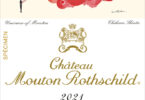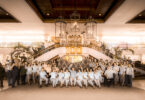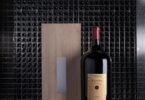It was Australia Day 26th of january,and I was in the wine region of McLaren Vale ,..on a mission,..to witness the festivities surrounding“The Santos Cycling Tour Down Under” which has become an iconic event for South Australia and showcases South Australia globally and also provides an opportunity for visitors and the local community, to witness and participate in a world-class Cycling event,.. with much of the cycling route threading through the vineyards of South Australia including McLaren Vale.
You may also like
Can Wine Help – Happy Easter to...
2 weeks ago
The First Tranche of Wines from the Legendary Cellar...
4 months ago
The label for Château Mouton Rothschild 2021...
5 months ago
by Staff Writer
CENTARA GRAND BEACH RESORT HOTEL AND VILLAS -AN...
6 months ago
Sotheby’s and Masseto to offer the very first bottles...
1 year ago
by Staff Writer
Christie’s Presents The Two Continents...
1 year ago







